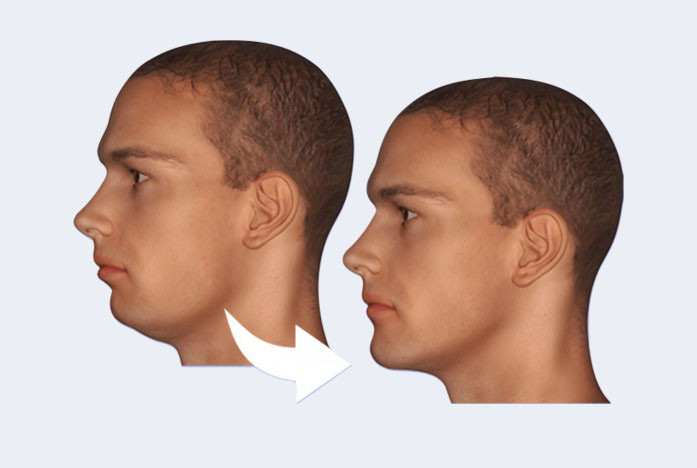Jaw Surgery
When your jaw is out of alignment, everyday tasks, such as chewing, swallowing, and speaking, are more difficult and sometimes even painful.
Corrective jaw surgery can have a dramatic & positive effect on many aspects of your life by creating a more harmonious bite and appearance.
So how can corrective jaw surgery change your life?
Corrective Jaw Surgery Can
Eliminate Chronic Pain and Improve Your Appearance
Realigning your jaw can enhance your appearance.
When your jaw is out of alignment, your face can look unbalanced. Corrective jaw surgery can adjust the proportions
of your face for a more symmetrical appearance.
Corrective jaw surgery can make eating simpler.
Misalignment in your jaw can cause difficulty chewing, biting, and swallowing. When your jaw and teeth meet properly,
you can eat with ease.
Adjusting your jaw can make breathing and speaking easier.
Often, jaw misalignment can cause breathing problems, such as sleep apnea or snoring, and also disrupt the
way you naturally speak.
Here’s what corrective jaw surgery can do…
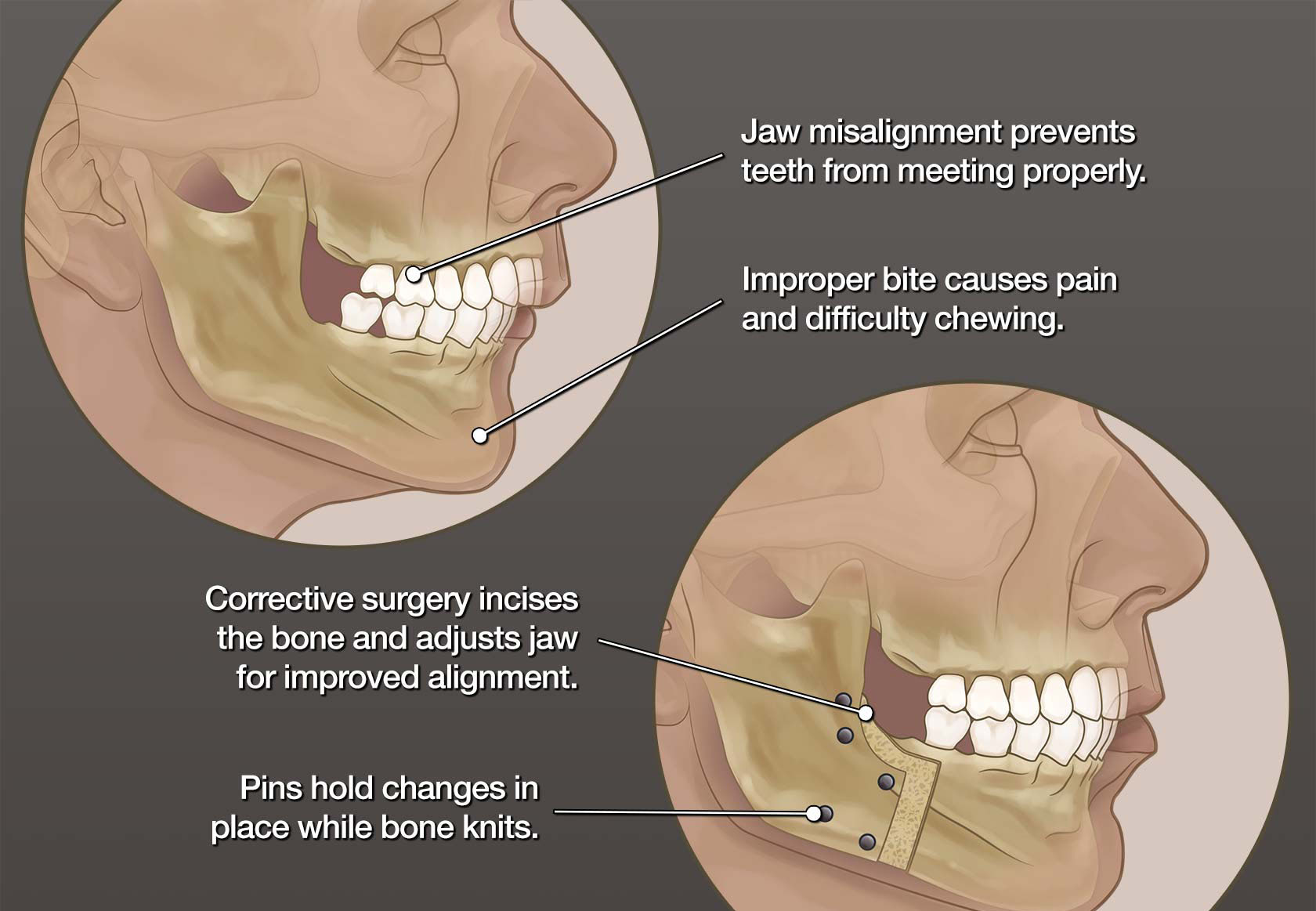
Why Should I Undergo
Corrective Jaw Surgery?

Adjusting your jaw can improve your comfort, appearance, and overall well-being.
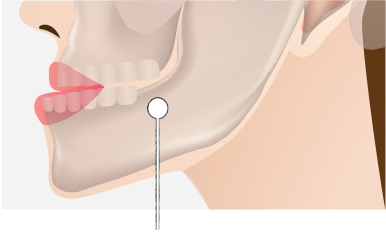
Jaw misalignment causes pain and discomfort
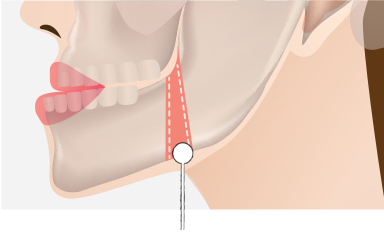
Using an incision, your dentist realigns your jaw
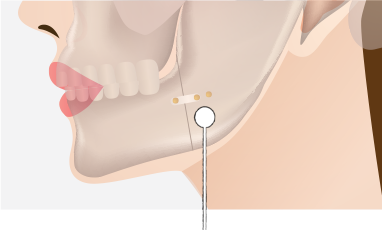
Secure hardware holds the final result in place
But Isn’t Surgery Expensive?
Is it Really Worth It?
Jaw surgery is often a medical necessity and prevents potentially serious health concerns. In many cases, insurance will cover a large portion of the procedure, making corrective jaw surgery more affordable.
The typical cost of the procedure, including fees and follow-up care, can range from $20,000 to 40,000.
Let’s see how corrective jaw surgery works:
Through a combination of orthodontics and surgery, this procedure can improve the function of your jaw and your overall appearance.
Treatment Timeline
For a Better Bite
Fully correcting the alignment of your jaw can take several years from start to finish. Generally, your dentist, orthodontist, and surgeon will work together to develop the best plan for you.
1. First Steps
In general, patients need braces to align their teeth before surgery. Typically, alignment takes 12 to 18 months.
2. Undergoing Surgery
Jaw surgery is performed by a surgeon under general anesthesia in a hospital. The jawbone is incised and may be augmented, reshaped, or adjusted. Alterations are held in place with permanent hardware. Corrective jaw surgery can address your upper jaw, lower jaw, chin, or a combination.
3. After the Procedure
You may need to stay in the hospital for two to four nights after surgery.
4. Recovery
Most patients can return to work or school within one to three weeks, but full healing can take up to three months.
5. Final Adjustments
After about six weeks, your orthodontist may recommend a second round of braces, which can take several more months to complete.
Concerned about undergoing surgery?
You Have Options
Some patients with jaw misalignments decide against surgery. If your jaw is only slightly out of alignment, your orthodontist may be able to realign your teeth and bite with braces or Invisalign®.
Other patients can reduce jaw discomfort with oral appliance therapy. However, in some cases, the only way to really address painful symptoms is through surgery.
When your jaw is aligned properly, your teeth fit together naturally for smooth, easy function and an improved appearance. Schedule an appointment and discover the difference good alignment can make.

